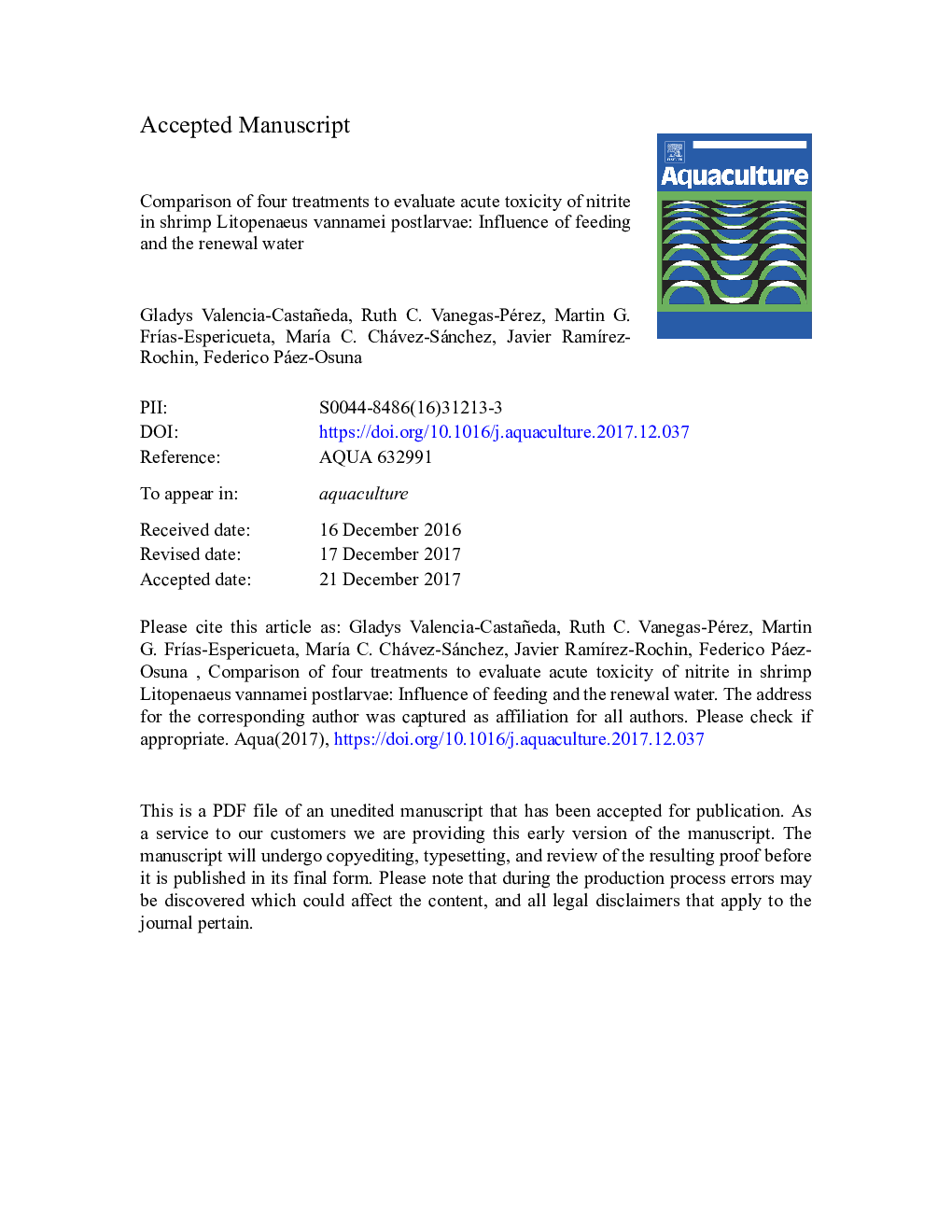| Article ID | Journal | Published Year | Pages | File Type |
|---|---|---|---|---|
| 8493283 | Aquaculture | 2018 | 26 Pages |
Abstract
Distincts methods are used to evaluate acute toxicity and generate different values of LC50. However, the static with renewal (100% renewal every 24 h) and feeding method is the more utilized. This study was developed to determine the differences between the LC50 obtained and define which method is most adequate for testing acute toxicity of nitrite in shrimp. Litopenaeus vannamei postlarvae (PL18) were exposed to different concentrations of nitrite-N (nitrite as nitrogen) at 3 g/L of salinity, using two different strategies of renewal solution and feeding trials: treatment Ts/nf/1 (static (no water renewal) + not feed), Tsr/f/2 (static with renewal + feed), Tsr/nf/3 (static with renewal + not feed) and Ts/f/4 (static + feed). Different values of LC50 nitrite-N for 96 h values were generated for the four distinct treatments (Tsr/f/2 > Tsr/nf/3 > Ts/nf/1, Ts/f/4). However, significant differences (p < 0.05) were only between the treatments that involves feeding and not feeding in the static with renewal method (Tsr/f/2 > Tsr/nf/3). Considering the magnitude and variation of the LC50 values, it is recommended the static with renewal method and feeding method which generates higher values of LC50 and lowest variation, results suggesting that this method is more adequate to evaluate in shrimps nitrite and other nitrogen compounds acute toxicity.
Related Topics
Life Sciences
Agricultural and Biological Sciences
Aquatic Science
Authors
Gladys Valencia-Castañeda, Ruth C. Vanegas-Pérez, MartÃn G. FrÃas-Espericueta, MarÃa C. Chávez-Sánchez, Javier RamÃrez-RochÃn, Federico Páez-Osuna,
